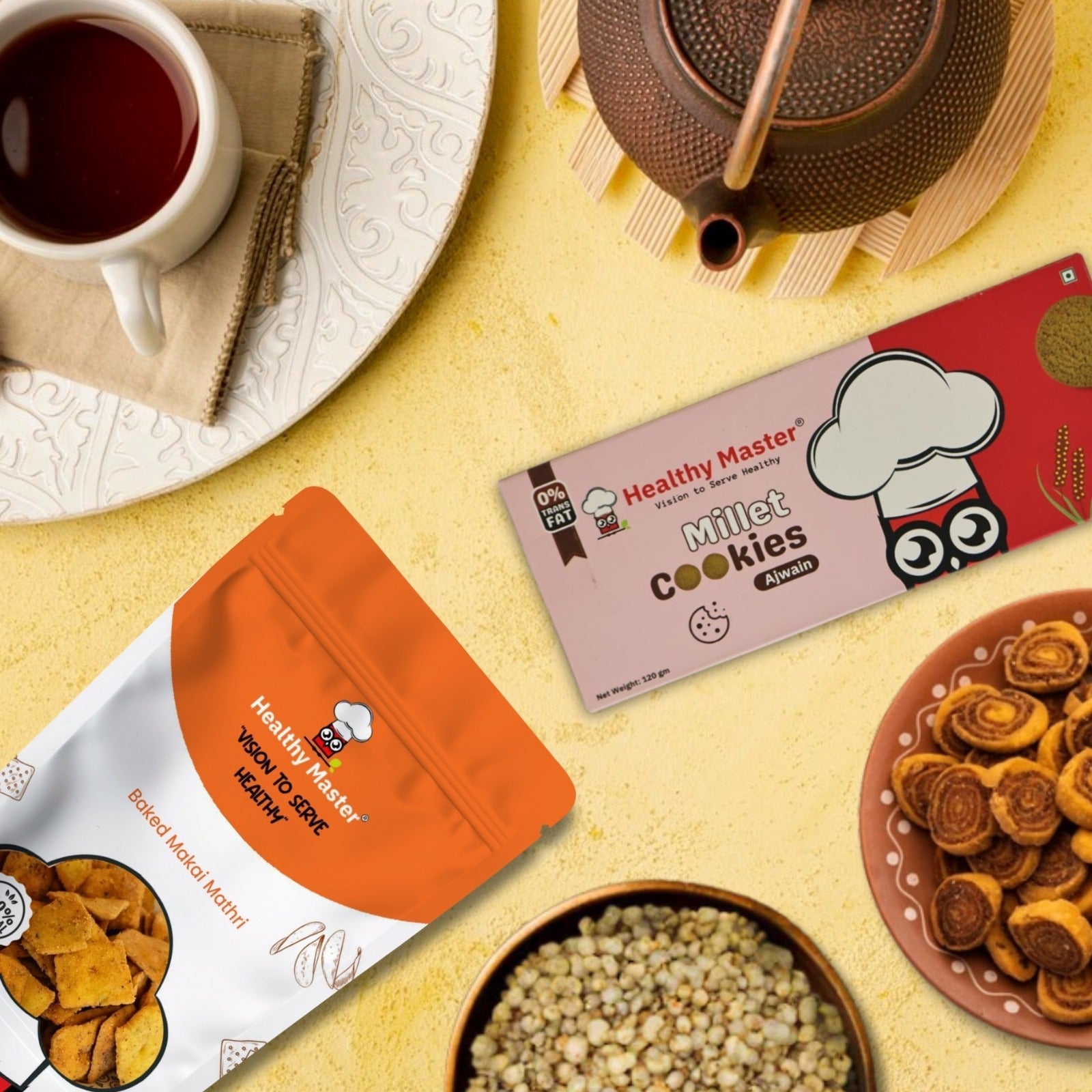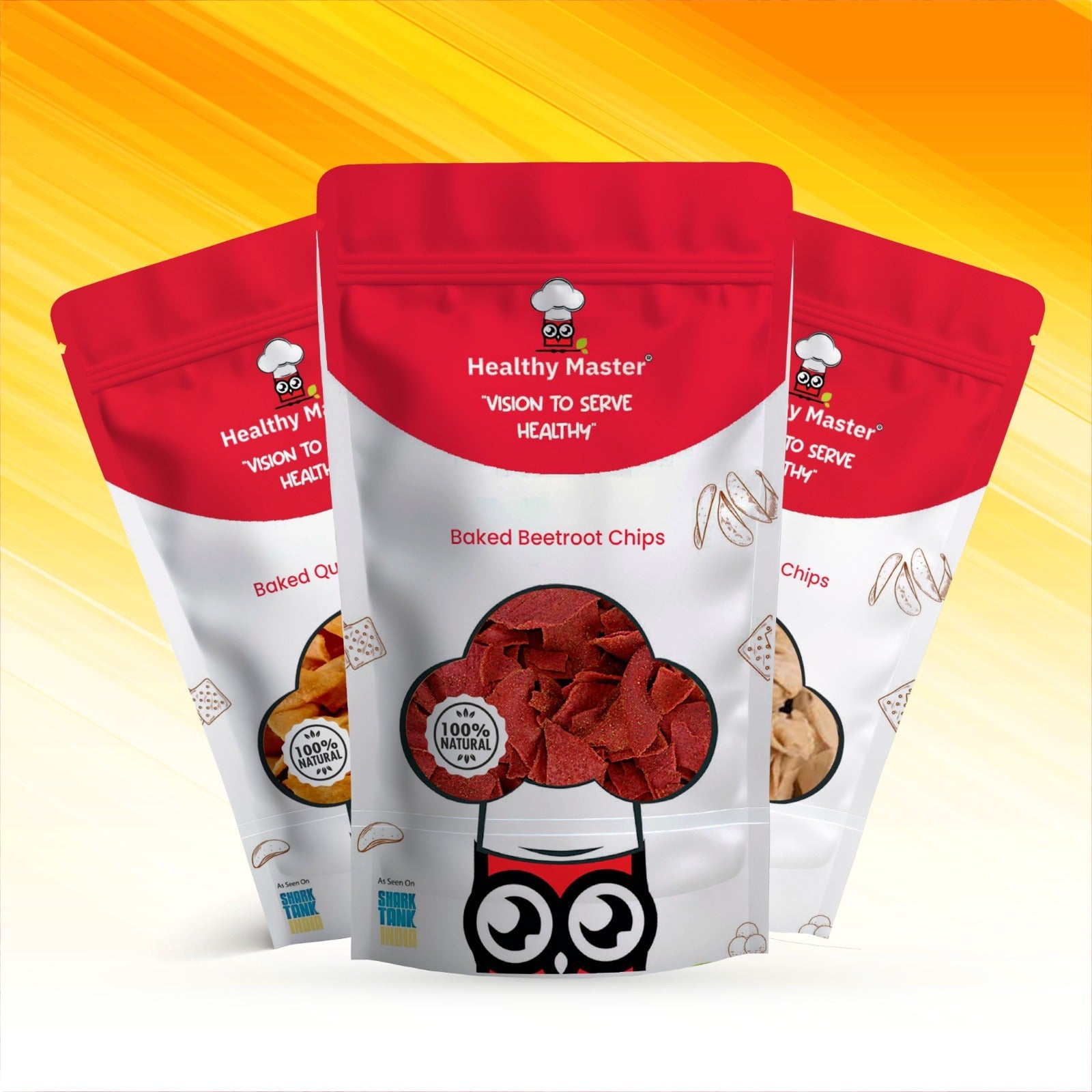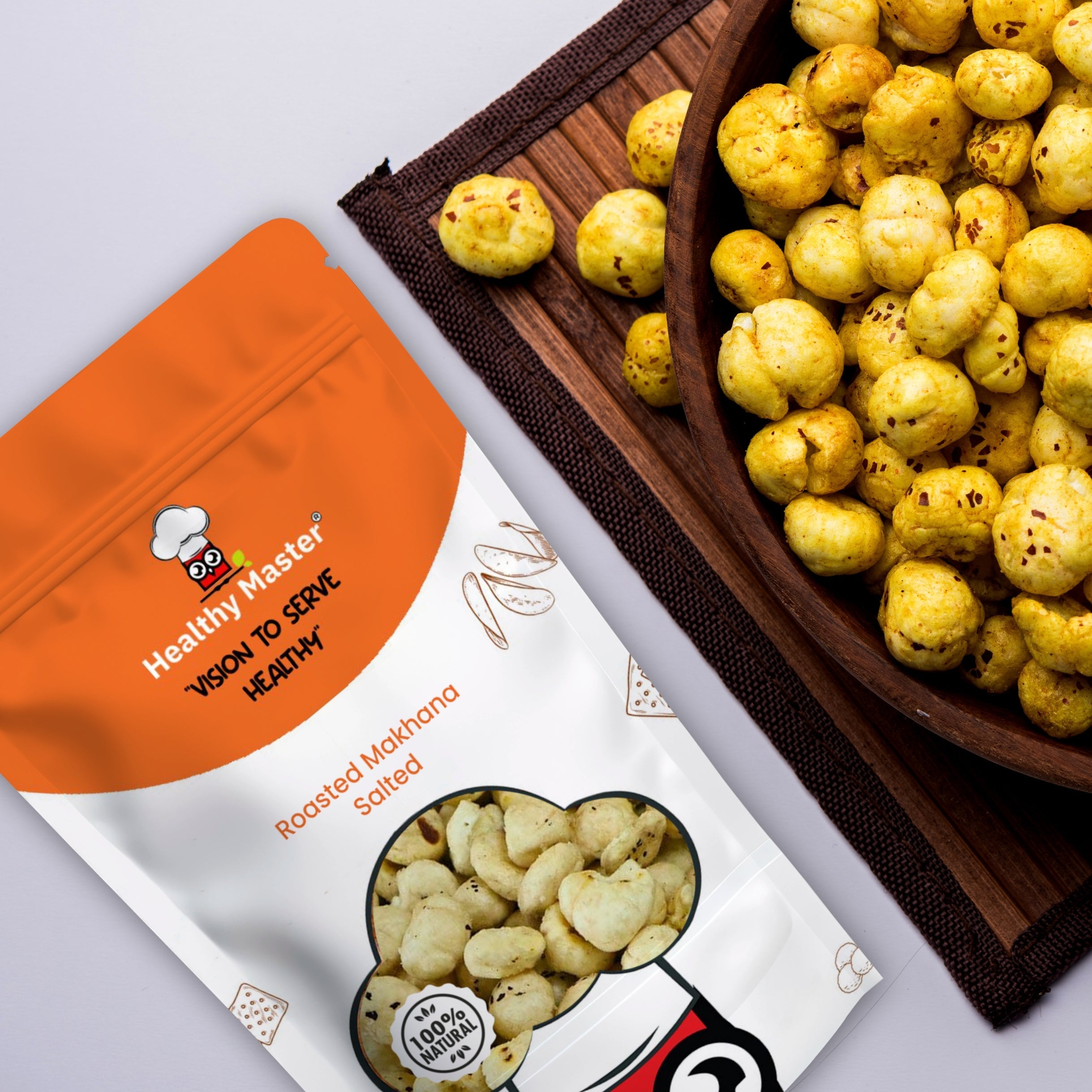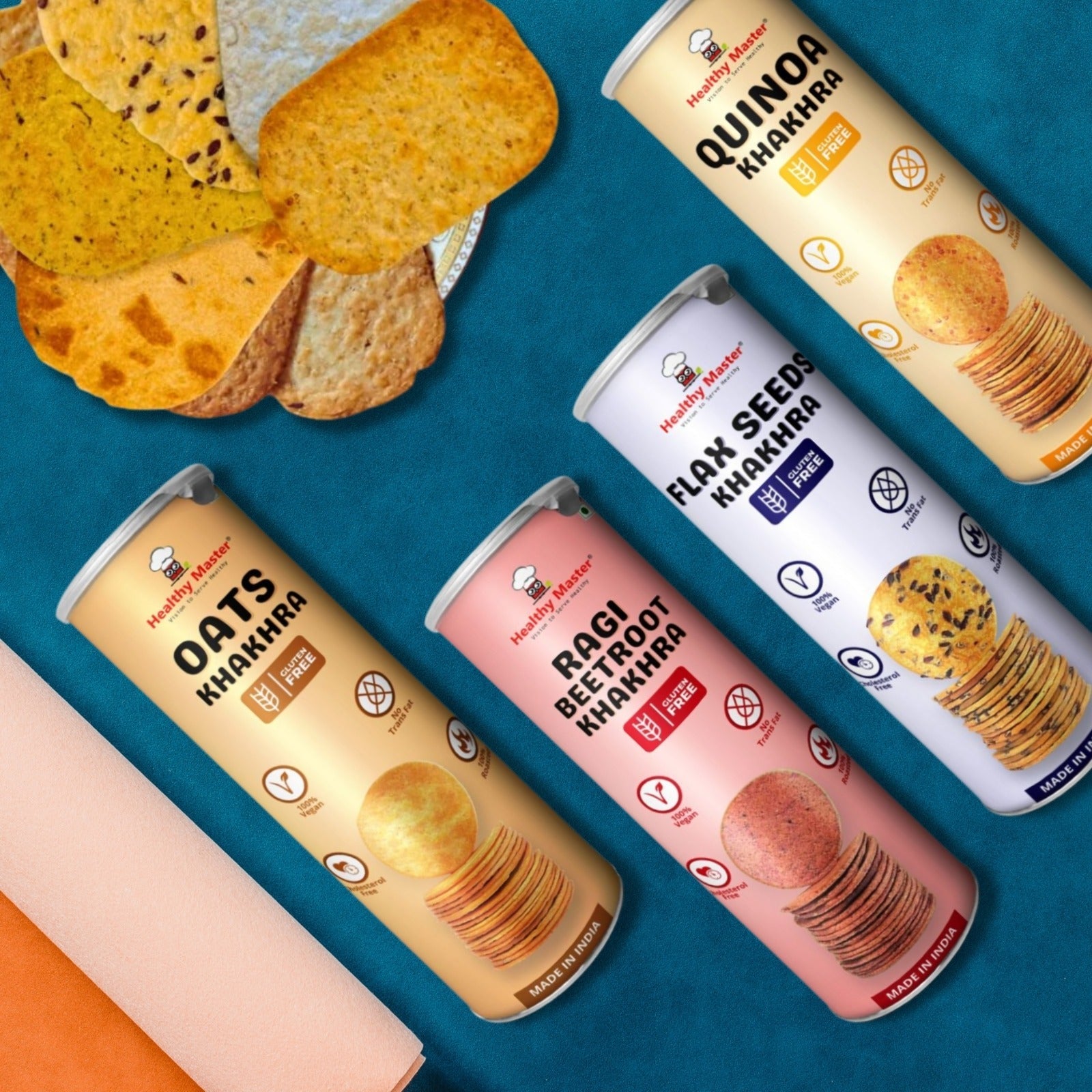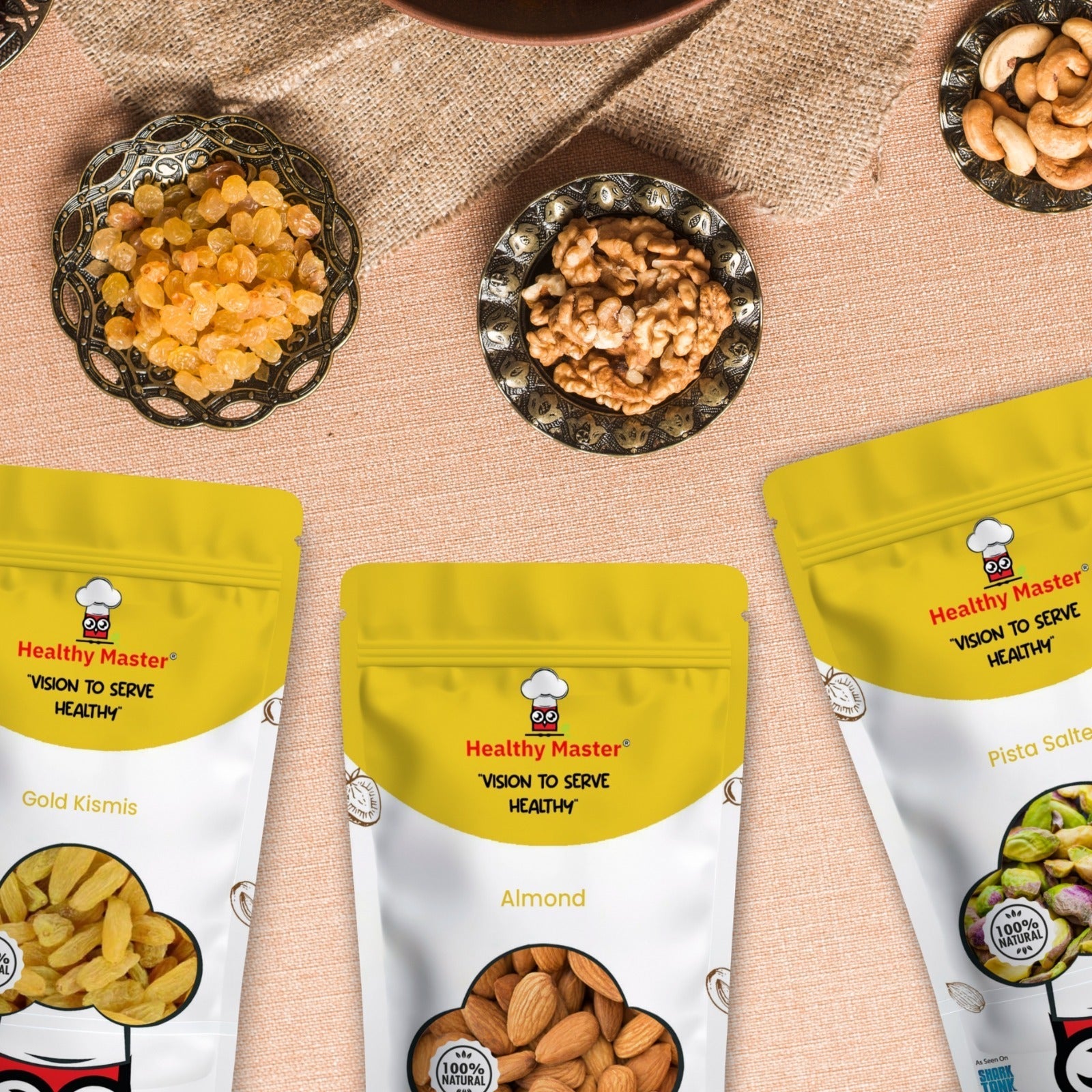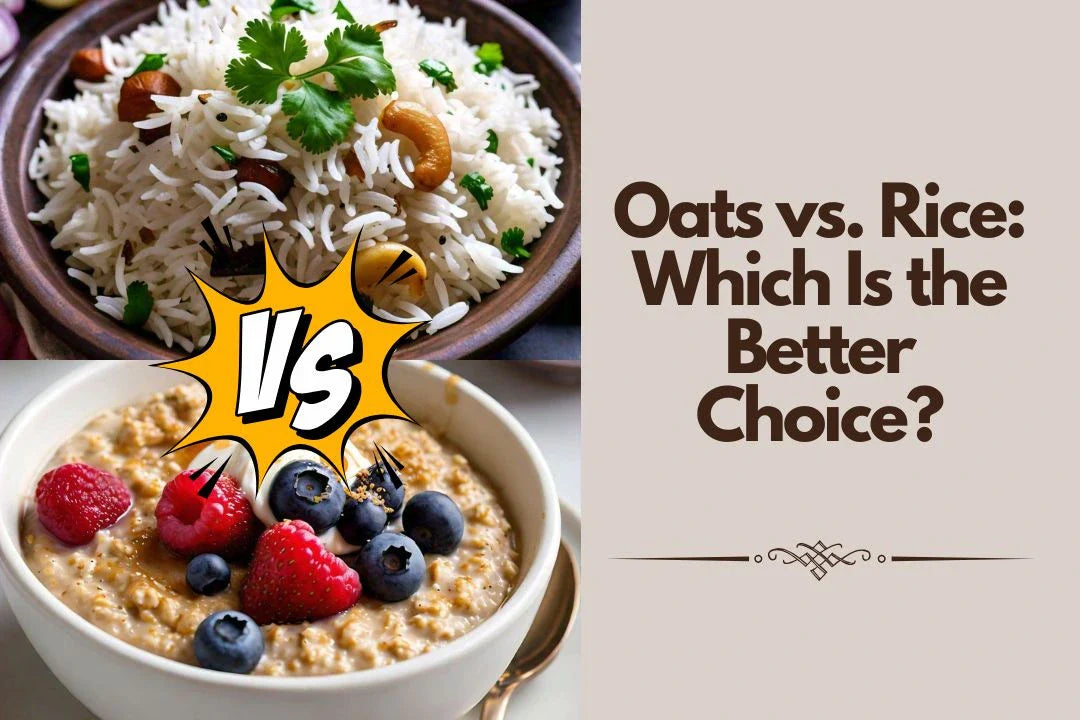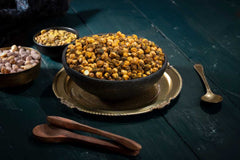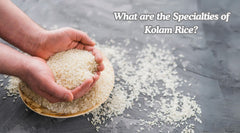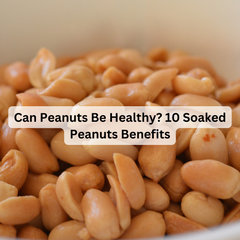There is a lot of controversy surrounding the oats vs. rice debate. Oats are undoubtedly a great grain to incorporate into your diet, as they are packed with many vitamins, minerals, and antioxidants. On the other hand, when it comes to manganese and iron, rice is the best pick. Thus, you may have to gain some insights before choosing which is the best option for your diet.
When it comes to healthy eating, one of the most common debates is which is better oats or rice for weight loss. Both are stapled foods across the world, but they differ in nutrition, health benefits, and suitability for specific goals like weight loss, diabetes, or heart health. Let’s take a closer look.
Oats vs White Rice – Which One Is Healthier?
The comparison of oats vs white rice often highlights the nutritional differences. While both provide carbohydrates, their processing and impact on the body vary.
How white rice is processed
White rice is a refined grain; its bran and germ are removed during milling. This gives it a soft texture and longer shelf life, but also strips away fiber, vitamins, and minerals. As a result, white rice is mostly starch with minimal micronutrients.
Blood sugar impact (Glycemic Index)
White rice has a high glycemic index (GI), which means it causes a quick spike in blood sugar levels. Oats, on the other hand, have a low to medium GI, making them a better choice for people managing diabetes, weight, or energy levels.
Why oats are better for sustained energy
Oats are rich in fiber, especially beta-glucan, which slows digestion and provides a steady release of energy. This makes oats superior to white rice for sustained energy and better satiety.
Oats vs Brown Rice – A Closer Comparison
If we compare oats vs brown rice, both are whole grains and offer significant health benefits. However, their nutrient profile is slightly different.
Fiber and antioxidant content
Brown rice retains its bran layer, making it higher in fiber and certain antioxidants compared to white rice. However, oats still lead with higher soluble fiber, which is particularly beneficial for lowering cholesterol.
Which supports heart and digestive health more
Both oats and brown rice support digestive health, but oats are especially effective in improving heart health due to beta-glucan’s role in reducing LDL cholesterol. Brown rice, while beneficial, offers more support for gut health thanks to its insoluble fiber.
Best uses in everyday meals
Oats are versatile in breakfast dishes like porridge, overnight oats, and upma. Brown rice fits well in Indian meals such as khichdi, pulao, or Buddha bowls. Both can be included depending on meal type and lifestyle.
Which Is Better – Oats or Rice for Weight Loss?
One of the most common questions is which is better oats or rice for weight loss. Here’s what science says:
Role of fiber and satiety
Oats contain more fiber than both white and brown rice, which helps you stay full longer and prevents overeating, crucial for weight management.
How each grain affects metabolism
Oats have a slower digestion rate, leading to gradual energy release, which can help in maintaining metabolism. White rice digests quickly, often leaving you hungrier sooner, while brown rice lies somewhere in between.
Recommended portions and meals
For weight loss, oats are best consumed as breakfast or snacks, while brown rice can be included in controlled portions for lunch or dinner. White rice should ideally be limited or paired with vegetables and proteins for balance.
Oats or Rice – What’s Better for Diabetics?
The nutrition comparison of oats and rice is especially important for people managing blood sugar.
Low GI of oats vs high GI of white rice
Oats have a low GI, making them safer for diabetics. White rice, with a high GI, can cause rapid glucose spikes. Brown rice is better than white, but still not as beneficial as oats.
Effect on blood sugar and insulin
Oats help regulate insulin sensitivity and reduce blood sugar fluctuations, while rice (especially white) can worsen sugar control if eaten in excess.
Why oats may be preferable
For diabetics, oats are often considered the superior choice. They can replace rice in some meals or be alternated with brown rice for variety.
Taste, Texture & Versatility in Cooking
While nutrition is important, taste and cooking flexibility also matter in daily life.
How each performs in recipes
-
Oats: Creamy, nutty, slightly chewy texture. Best for porridges, smoothies, baked goods, and upma.
-
Rice: Neutral taste, fluffy texture. Works well with curries, dals, and stir-fries.
Indian meal examples: khichdi, upma, porridge, pulao
-
Oats upma/porridge - Healthy breakfast option.
-
Rice khichdi/pulao - Comforting lunch or dinner.
Both can be adapted for Indian cooking styles.
Which one is easier to digest or cook?
White rice is quicker to cook and easier to digest, making it suitable for those recovering from illness. Oats may take longer, but they are more nutrient-dense.
When to Choose Oats and When to Choose Rice?
Instead of asking “Is oats better than rice?”, it’s better to understand when to consume each.
Oats for breakfast, rice for main meals
-
Oats: Ideal for breakfast and snacks as they provide steady energy.
-
Rice: Works better in main meals for lunch and dinner.
Oats as a rice substitute in certain dishes
You can use oats in pulao, khichdi, or even risotto-style recipes as a healthier alternative to rice.
Lifestyle/diet preferences (high protein, low carb, gluten-free, etc.)
-
High protein diets - Pair oats with Greek yogurt or nuts.
-
Low-carb diets - Prefer oats in small portions over rice.
-
Gluten-free diets - Both oats (certified gluten-free) and rice fit in well.
Planning a Balanced Diet Based on Your Body’s Needs
Oats and rice are two major grains that are widely consumed around the world. While both have their own merits when it comes to nutrition, making the right choice depends on various factors like your lifestyle, dietary needs as well as personal preferences. This content will provide you with more information about the nutritional profiles of both these grains, their unique health benefits, and other practical considerations that can help you to make informed decisions.
Understanding the Nutritional Profile of Oats Vs Rice
Oats
Oats are very rich in nutrients as they are very minimally processed. They are particularly high in soluble fiber as well as beta-glucan, which lowers the cholesterol levels in the body and also regulates the blood sugar levels. On the other hand, oats are also high in micronutrients like magnesium, manganese, iron, and B vitamins. Below mentioned are the nutritional values in 100g of oats:
|
Calories |
389 |
|
Carbohydrates |
66g |
|
Protein |
17g |
|
Fiber |
10.6g |
|
Fat |
7g |
White Rice
White Rice is a very common dietary staple in most cultures. They come in different forms. Some of the most common varieties that are widely consumed around the world are the white, brown, and red rice. Below mentioned are the nutritional values in 100g of cooked white and brown rice:
|
Calories |
130 |
|
Carbohydrates |
28g |
|
Protein |
2.7g |
|
Fiber |
0.4g |
|
Fat |
0.3g |
Brown Rice
Brown rice is considered healthier than the white variety as it retains the bran and germ. This makes it a better source of fiber, vitamins as well and minerals. However, although white rice is low in fiber, they are easy to digest and does not cause bloating issues.
|
Calories |
111 |
|---|---|
|
Carbohydrates |
23g |
|
Protein |
2.6g |
|
Fiber |
1.8g |
|
Fat |
0.9g |
Know more about the Health Benefits of Oats vs Rice
Oats
When it comes to the health benefits, both of these grains have their unique nutritional benefits for health and the body. Some of them are mentioned below for your needs.
Heart Health
Oats are great for your heart. They contain good amounts of soluble fiber that binds to cholesterol present in the digestive tract, which in turn reduces the LDL (bad) cholesterol levels. Regular oats consumption is also associated with improved heart health.
Blood Sugar Control
Oats also have a low GI (glycemic index), which means they are slow to digest and cause a stable rise in blood sugar. Moreover, this makes them a great option for people with diabetes or for people who want to maintain a stable energy level.
Digestive Health
Oats can also improve your digestive health as they can act as a probiotic. Additionally, they support the growth of beneficial gut bacteria.
Weight Management
As oats are high in fiber, they promote satiety, which will help you to easily control your calorie intake throughout the day. Fiber also adds bulk to the stool and keeps your bowel movements regular. Additionally, this can be a great help in your weight management.
Rice
-
A Quick Energy Source
Rice is considered a quick energy source that can provide you with a quick boost in energy. This makes it ideal for athletes and also for people who are recovering from illness.
-
Gluten Free
Both white and brown rice are gluten free, which makes it a suitable candidate for people with celiac disease or gluten sensitivity. Unlike maida and other gluten containing grains, rice will not cause any discomfort even if you are having them regularly.
-
Rich in Antioxidants
White and brown rice also contain some of the important antioxidants like anthocyanins, which will help your body to combat inflammation and oxidative stress.
-
Supports Muscle Recovery
Rice is also a good source of carbohydrates, which replenish the glycogen stores after any type of intense physical activity.
Oats vs Rice: Choosing the Right Option Based on Your Goals
As you can see above, both of these grains have different nutritional values and can have different impacts on your body. Thus, you have to choose the right option based on your health and fitness goals.
Oats vs Rice: Weight Loss
When it comes to weight loss, oats are a clear winner. Moreover, the high fiber content in this grain keeps you filled for a longer time, reduces hunger pangs, and avoids cravings. On the other hand, brown rice also supports weight loss. However, due to its low fiber content, it is less filling than oats. On the other hand, both are rich in proteins.
Muscle Building
If you are aiming for muscle building, rice can be an ideal option due to its quickly digesting carbohydrates. It provides a rapid energy boost, which can be beneficial before or after workouts. However, oats can also be a great addition to build muscles, as you can easily pair them with other protein sources.
Oats vs Rice: Digestive Health
When it comes to digestive health, oats can be a great option due to their prebiotic properties. The high fiber content also helps with digestion and regular bowel movements.
Blood Sugar Management
Oats have a low glycemic index (GI) and high soluble fiber. Thus, they stabilize the blood sugar spike and help you maintain the ideal levels. However, white rice has high GI, thus it is not suitable for people with diabetic conditions.
Conclusion
If you see the above evaluation, you will be able to see that both oats and rice are excellent grains with their unique nutritional benefits. Moreover, the key is moderation and balance. All you have to do is choose the right option you need by considering these important factors. Know what suits your body best and also support your goals in the best way possible.
If you are looking for some excellent oats based snacks, you can find some of the best options provided by Healthy Master. On the other hand, they are delicious, easy to munch and budget friendly.
Frequently Asked Questions
-
Are oats better than rice for weight loss?
Yes, oats are generally better due to their higher fiber and satiety levels, which help control appetite and calorie intake.
-
Can oats replace rice in daily meals?
Oats can replace rice in certain dishes like khichdi, upma, or porridge, but rice may still be preferred for main meals due to its lighter texture.
-
Which is better: oats or brown rice for heart health?
Oats are better for cholesterol management and heart health, while brown rice is good for digestion and gut health.
-
Are oats good for Indian diets?
Absolutely! Oats can be easily adapted into Indian recipes like oats dosa, oats upma, or even oats khichdi.
-
Is rice bad for health compared to oats?
Rice is not “bad,” but it is less nutrient-dense than oats. White rice should be eaten in moderation, while oats and brown rice provide more long-term health benefits.
 Deal of the week : Trial Snack Box - 18 Wholesome Delights Just at ₹ 899.00
Deal of the week : Trial Snack Box - 18 Wholesome Delights Just at ₹ 899.00


